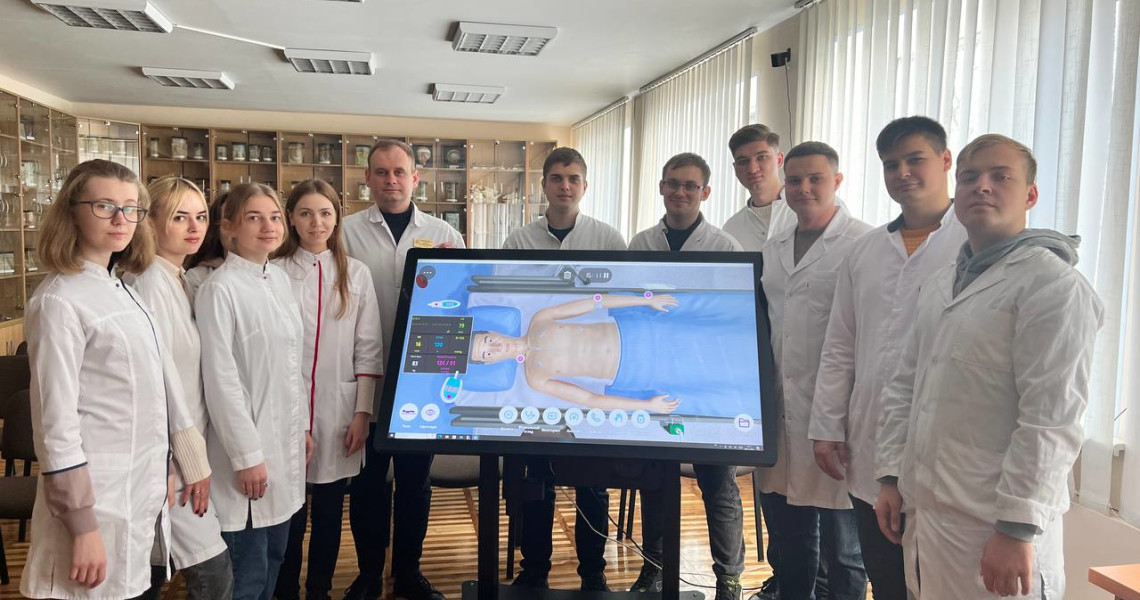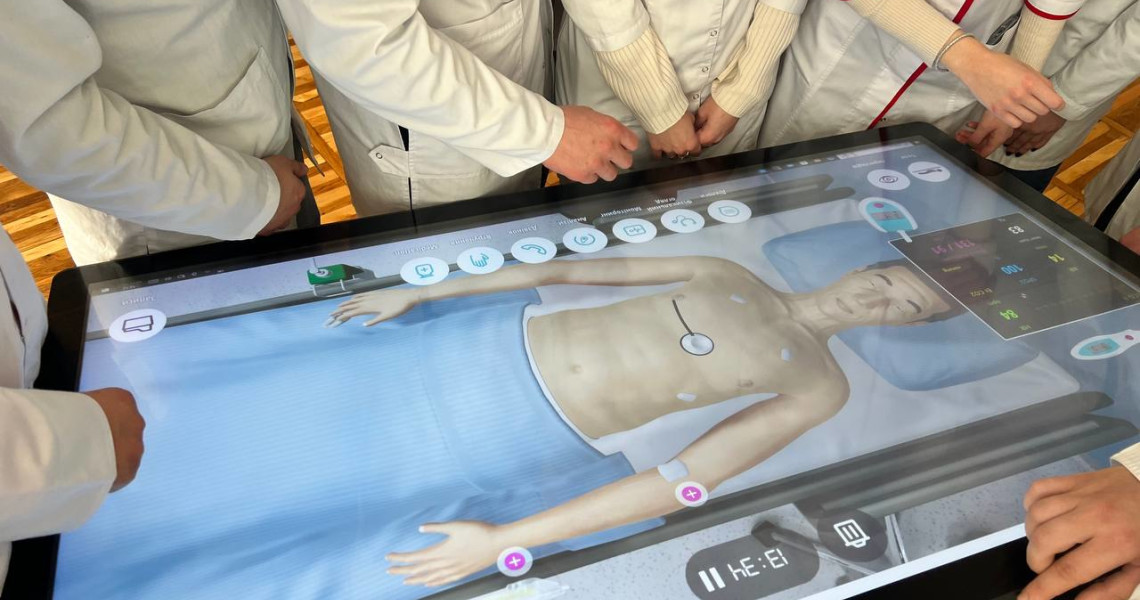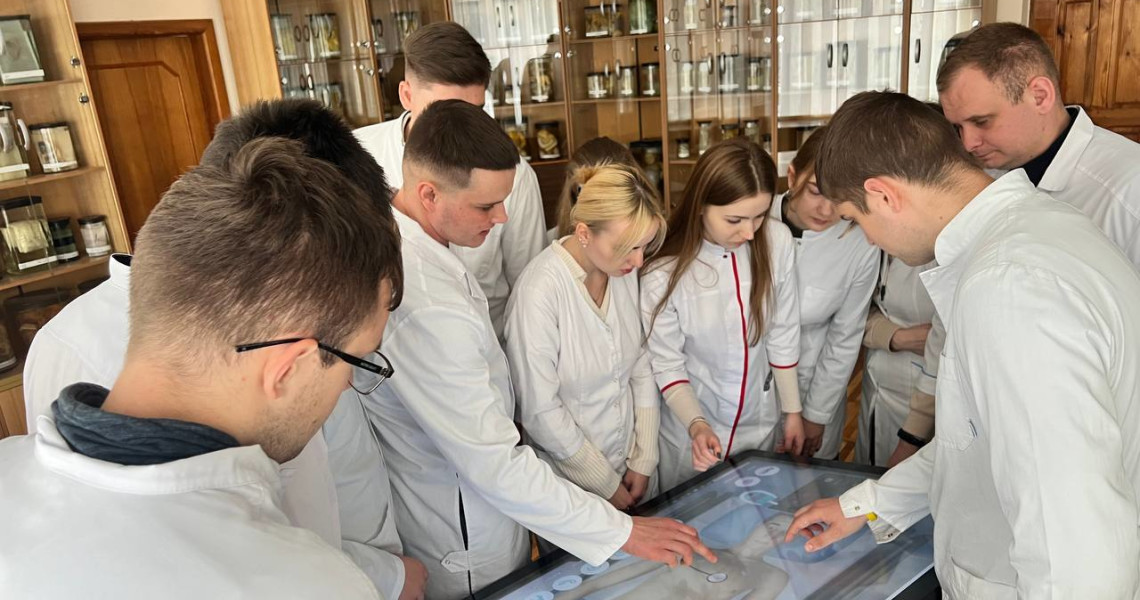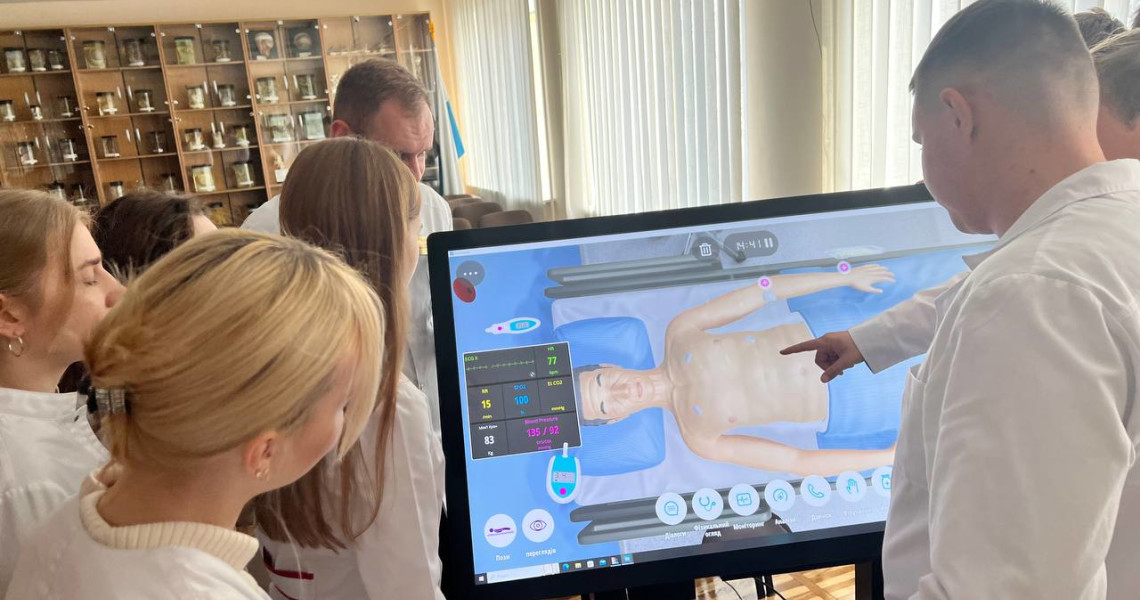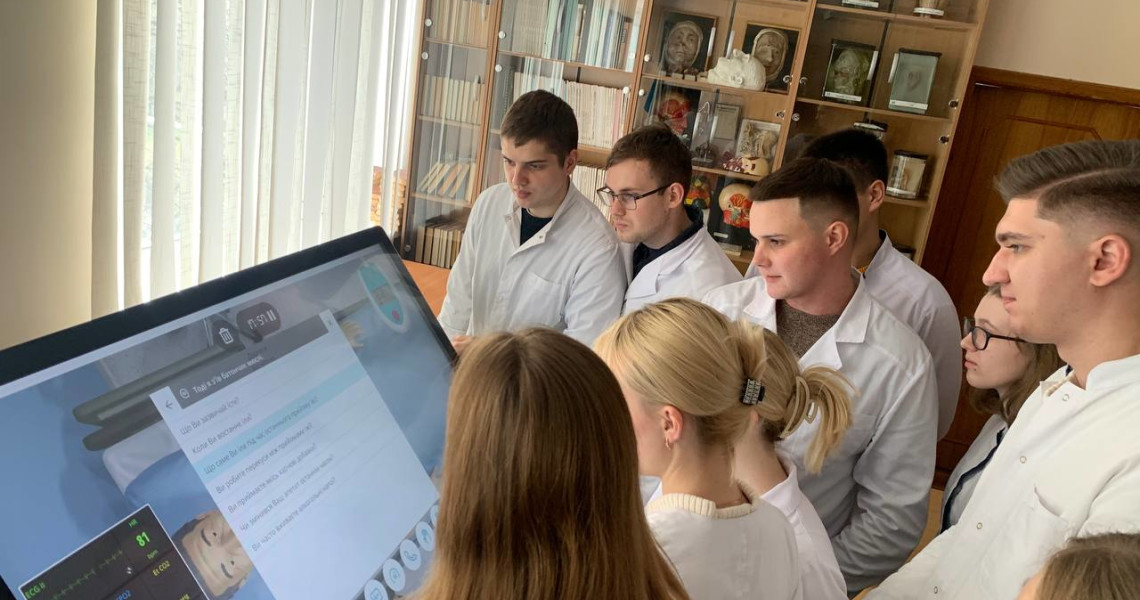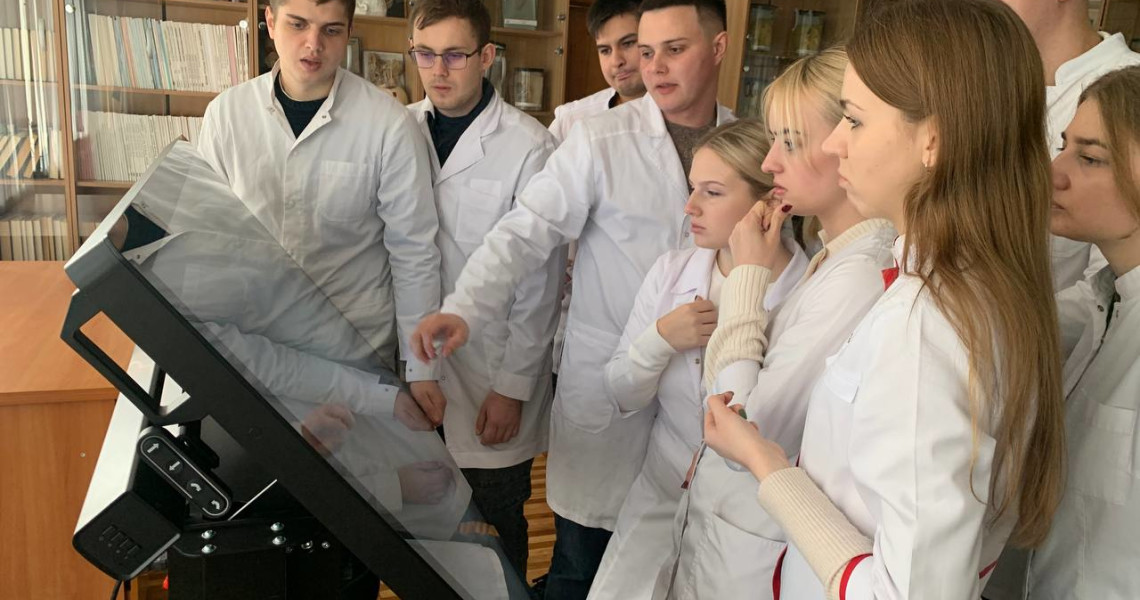9 листопада здобувачі освіти 6 курсу 4 групи медичного факультету №1 разом з асистентом кафедри внутрішньої медицини №1 Ігорем Третяком відпрацьовували свої навички та вдосконалювали знання на віртуальному пацієнті Body interact.
Віртуальний пацієнт – це інноваційна технологія в навчанні студентів, що дає змогу удосконалити свої знання не тільки на етапі невідкладної допомоги, але й на всьому шляху ведення пацієнта. Студентам доступні всі етапи збору скарг та анамнезу, проведення об'єктивного обстеження, направлення на лабораторні та інструментальні методи діагностики з подальшими результатами. Після цього пропонується корекція лікування та/або призначення свого плану лікування з подальшим веденням пацієнта кожного місяця. На кожному етапі ведення пацієнта, здобувачі освіти занурювались у процес справжнього консиліуму, де пропонували свій підхід у діагностиці та лікуванні.
У кінці, система комплексно оцінила підхід до діагностики та лікування і дала свій висновок, який допоміг оцінити як правильні, так і неправильні дії.
Advanced technologies in education at the Department of Internal Medicine No. 1
On November 9, the 6-year students of group 4, Medical Faculty No. 1, together with the Assistant Professor Ihor Tretiak, Department of Internal Medicine No. 1, practiced their skills and improved their knowledge on the virtual patient “Body interact”.
The virtual patient is an innovative technology in the education of students, which allows improving the knowledge not only at the stage of emergency care, but also throughout the entire patient management process. All stages of collecting complaints and anamnesis, conducting an objective examination, referral to laboratory and instrumental methods of diagnosis with further results are available to students. After that, correction of treatment and/or appointment of your treatment plan is suggested with further management of the patient every month. At each stage of patient management, students were immersed in the process of a real consultation, where they offered their approach to diagnosis and treatment.
At the end, the system comprehensively evaluated the approach to diagnosis and treatment and gave its conclusion, which helped to evaluate both correct and incorrect actions.






